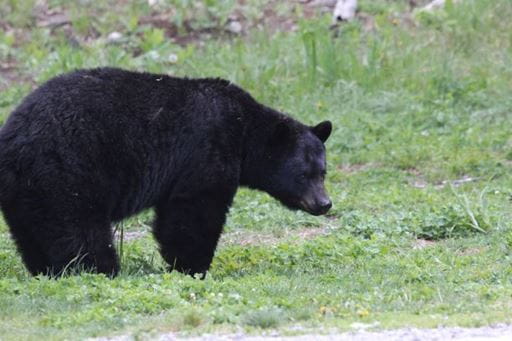Released on April 19, 2021
With spring in full swing, the Ministry of Environment is reminding people to be bear aware.
Black bears normally emerge from hibernation as the weather warms in late March through April. This is timed with availability of the first foods of the year, often green shoots, grasses and tree buds.
Bears can be found in many areas of the province. Their range includes all northern Saskatchewan forests and extends southward into the aspen parkland. It also includes some isolated ranges, such as the Touchwood Hills, the Qu'Appelle Valley and the South Saskatchewan River Valley.
It's important to remember that we share the landscape with bears. To help minimize conflict with these animals, landowners are encouraged to keep their yards free of attractants. Bears are ruled by their stomachs and are intelligent animals. If they cannot find food, they will leave the area.

When bears start to associate food with humans they become habituated, a nuisance, and a public safety concern.
Whether you live, work or spend time in bear country, by not taking precautions with attractants - such as household waste - you create a safety risk for yourself, your community and the bears.
Here is what you can do:
- Store refuse in a secure building or buy a bear-resistant container. Only put your garbage bin out on the morning of collection.
- Wash all recycling items and regularly clean garbage or recycling bins.
- Avoid leaving pet food accessible to wildlife.
- Only use bird feeders in the winter when bears are hibernating.
- Do not add fish, meat, fat, oils, unrinsed eggshells or any cooked food to compost bins.
- Properly clean and store barbecue grills after each use.
If you have an aggressive encounter with a bear, and/or if public safety is at risk, call the Turn in Poachers and Polluters (TIPP) line at 1-800-667-7561 or from your SaskTel cell phone at #5555.
To report concerns about nuisance bear(s), contact the ministry's general inquiry line at 1-800-567-4224 or by email at centre.inquiry@gov.sk.ca.
Additional information about bears and bear safety is available at www.saskatchewan.ca/wildlife-issues.
-30-
For more information, contact:
Jamie Gibson
Environment
Regina
Phone: 306-519-9290
Email: jamie.gibson@gov.sk.ca

